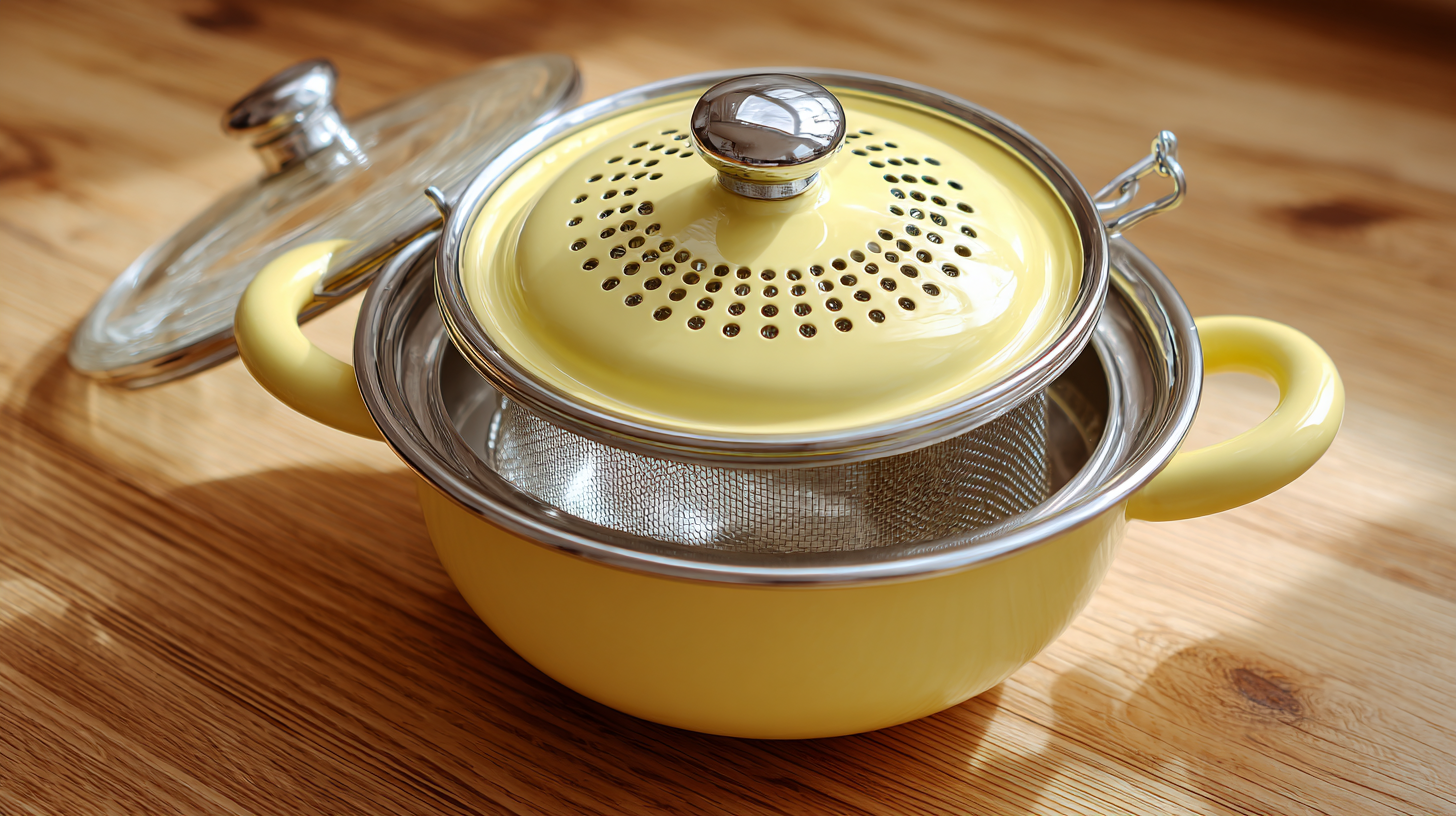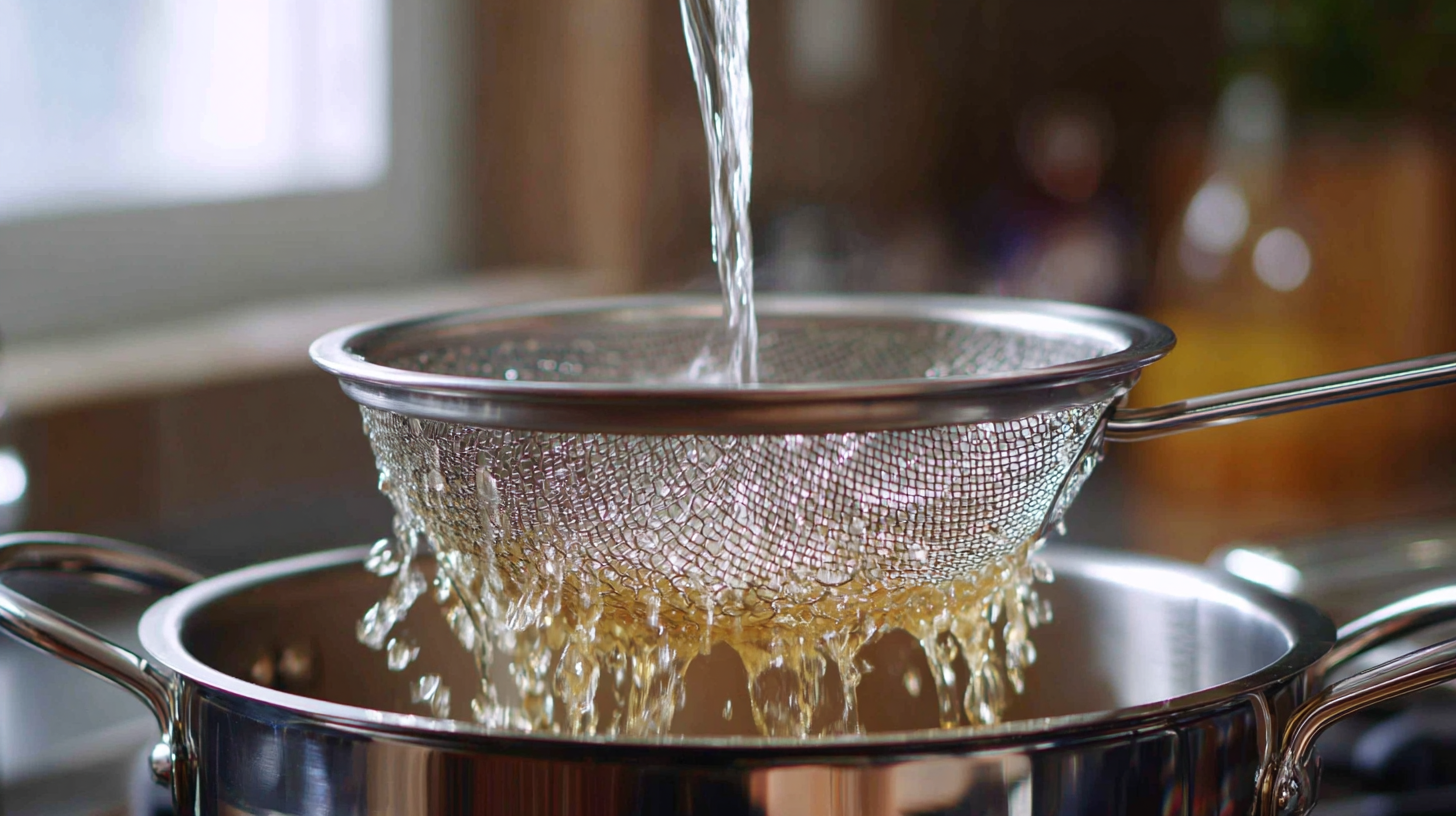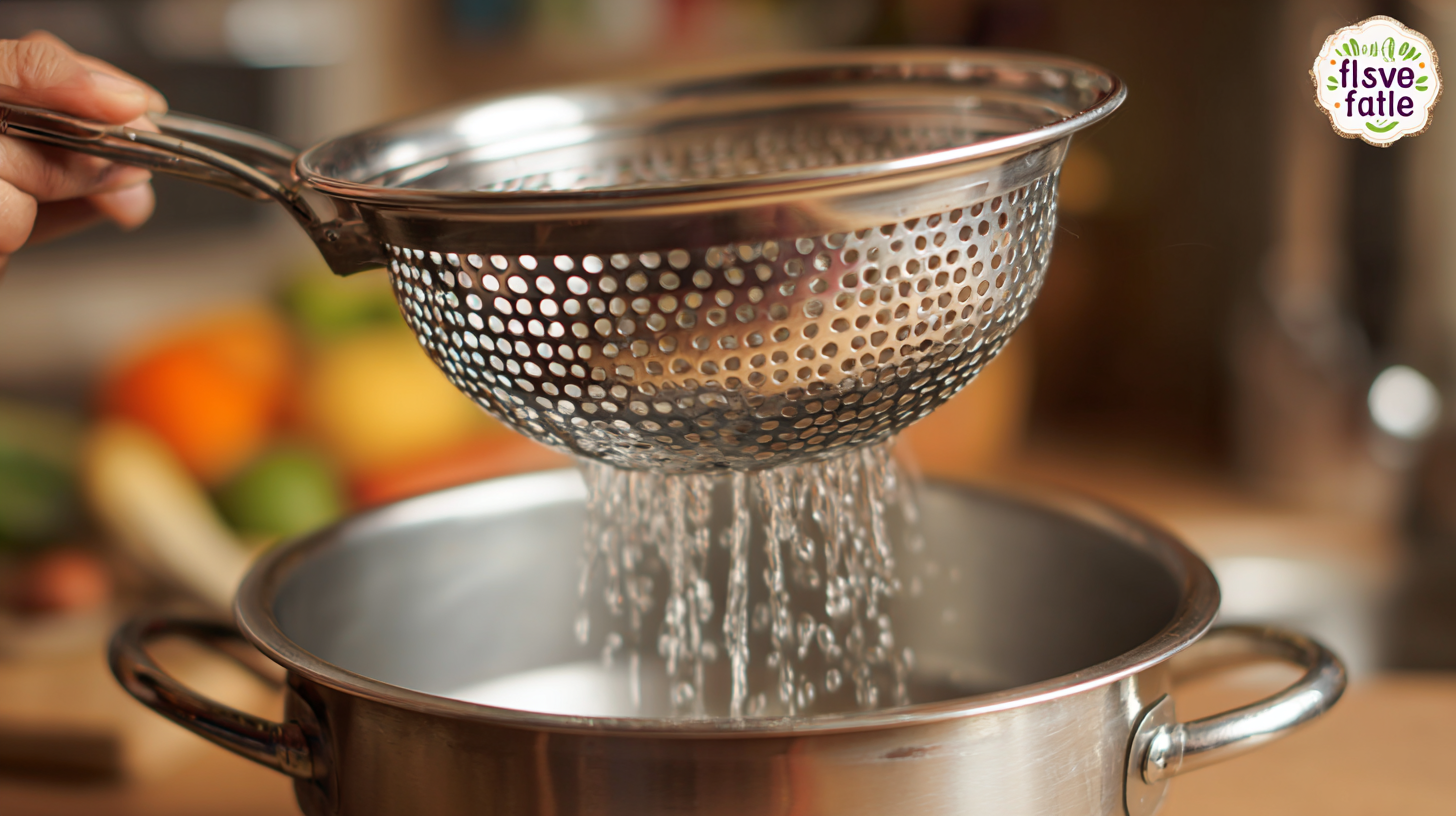Welcome to this website!

In the culinary world, the importance of a reliable food strainer cannot be overstated. With the global kitchenware market projected to reach approximately $26 billion by 2027, tools like food strainers play a crucial role in enhancing cooking efficiency and precision. A well-chosen food strainer can make the difference between a well-executed recipe and a kitchen disaster. According to a recent survey conducted by the International Housewares Association, over 70% of home cooks expressed a preference for high-quality strainers that offer both durability and versatility.

These essential tools not only aid in the preparation of various dishes—from draining pasta to straining sauces and stocks—but also contribute to healthier cooking by allowing cooks to eliminate unwanted fats and impurities. As more individuals embrace culinary exploration and healthy eating, understanding how to select the ideal food strainer becomes paramount for anyone looking to elevate their kitchen experience.
When it comes to selecting the best food strainer for your kitchen, it's crucial to understand the different types available on the market. The most common types include mesh strainers, colanders, and chinois. Mesh strainers are ideal for fine filtering, making them perfect for tasks like straining sauces or rinsing small grains. They come in various sizes and often have a sturdy handle for easy use. If you're looking for something that can handle larger volumes, a colander is your best bet. Typically used for draining pasta or washing fruits and vegetables, colanders have larger holes that allow for quick drainage while keeping your ingredients intact.
Another option worth considering is the chinois, a conical strainer that excels at producing smooth liquids and purées. This type is essential for chefs aiming for a restaurant-quality finish in sauces and soups. Additionally, some food strainers come with different features, such as heat-resistance for hot liquids or collapsible designs for easy storage. By taking the time to explore these types of food strainers, you can select the one that best suits your cooking needs and enhances your culinary adventures.
When selecting the best food strainer for your kitchen, it's essential to consider key features that can enhance your food straining performance. A well-designed strainer should include material quality, size, and mesh fineness. According to a report by the Food Safety Network, the right choice can significantly impact food texture and safety, particularly in mitigating contaminants during the preparation process.
One crucial tip is to opt for stainless steel strainers over plastic ones. Stainless steel not only ensures durability but also resists stains and odors, making it easier to maintain hygiene in your kitchen. Additionally, a report from the Kitchenware Industry Association indicates that mesh strainers with a minimum of 200 microns are optimal for straining fine contents, such as sauces or stocks, without losing essential flavors.
Another important feature to consider is the strainer's handle and stability. Ergonomic handles can make your straining process more comfortable, especially during extended use. Furthermore, a report published by the American Culinary Federation highlights that stability is key; strainers with a solid base or support allow for hands-free operation, helping to streamline your cooking experience while achieving the best culinary results.
When selecting the best food strainer for your kitchen, understanding how different materials affect durability and food safety is crucial. Stainless steel strainers are often favored for their robustness and resistance to rust and corrosion. They can withstand high temperatures and are dishwasher safe, ensuring easy cleaning. This longevity makes them a reliable choice for heavy-duty tasks like straining pasta or rinsing vegetables, allowing you to use them without worrying about wear and tear.

On the other hand, plastic strainers may seem lightweight and cost-effective, yet they can pose safety risks if not chosen carefully. Some plastics can leach harmful chemicals into food, particularly when exposed to high temperatures. It’s essential to look for BPA-free options that guarantee food safety. Additionally, while mesh strainers made of nylon or other plastics may offer convenience, they may not hold up as well over time. Therefore, doing research on the materials used in food strainers can lead to informed choices that prioritize both the safety of your meals and the longevity of your kitchen tools.
When selecting a food strainer, the size is a critical factor that should align with your kitchen needs. Start by assessing the volume of food you typically prepare. For smaller households or those who cook in limited batches, a compact strainer might be enough. However, if you often entertain guests or prepare large meals, consider opting for a larger model that can handle bigger quantities efficiently. A strainer that is too small may require you to strain multiple batches, which can be time-consuming and cumbersome.
Another essential aspect to consider is the type of food you commonly strain. Different foods require varying sizes and mesh types for optimal results. For instance, if you regularly make sauces or broths, a fine mesh strainer can provide the smooth texture you desire. Conversely, for draining pasta or rinsing beans, a colander with larger holes might be more appropriate. Moreover, assess your storage space—ensuring the strainer fits comfortably in your kitchen setup is just as important as its functionality. By strategically selecting the right size and type of strainer, you enhance your cooking experience and achieve better results in your culinary endeavors.
| Feature | Description | Recommended Size | Material Type |
|---|---|---|---|
| Mesh Size | Fine for small particles, coarse for larger items. | Fine mesh: 0.5 mm | Stainless Steel |
| Shape | Choose between round, oval, or square depending on your pots. | Round: 8-12 inches | Food Grade Plastic |
| Handle Design | Ergonomic handles reduce strain during use. | N/A | Silicone |
| Durability | Choose materials that withstand heat and rust. | N/A | Borosilicate Glass |
| Size Options | Consider different sizes for various tasks. | Small: 3-5 cups; Large: 6-10 cups | Various |
| Ease of Cleaning | Look for dishwasher safe options for convenience. | N/A | Stainless Steel & Plastic |
| Price Range | Determine your budget for quality strainer options. | $10 - $50 | N/A |
When it comes to choosing a food strainer for your kitchen, the decision between budget-friendly and premium options can significantly impact both your cooking experience and satisfaction. According to a recent industry report by Kitchenware Insights, over 60% of consumers are willing to invest more in kitchen tools that offer better durability and performance. Premium strainers, often made of stainless steel and equipped with fine mesh, not only last longer but also provide better filtration for soups and sauces, resulting in superior taste and texture.
Tip 1: Consider the material. Stainless steel strainers are not only durable but also resist rust and corrosion, making them a wise investment for long-term kitchen use. In contrast, plastic strainers, while appealing for their lower upfront cost, may need replacing more frequently, ultimately costing you more over time.
Tip 2: Evaluate your cooking habits. For those who frequently prepare sauces or homemade stocks, a premium strainer can save time and improve the cooking process. A report from Culinary Trends shows that 78% of home chefs believe that owning high-quality kitchen tools enhances their cooking skills. If your menu often includes straining tasks, opting for a premium option can streamline your efforts and yield better results.

